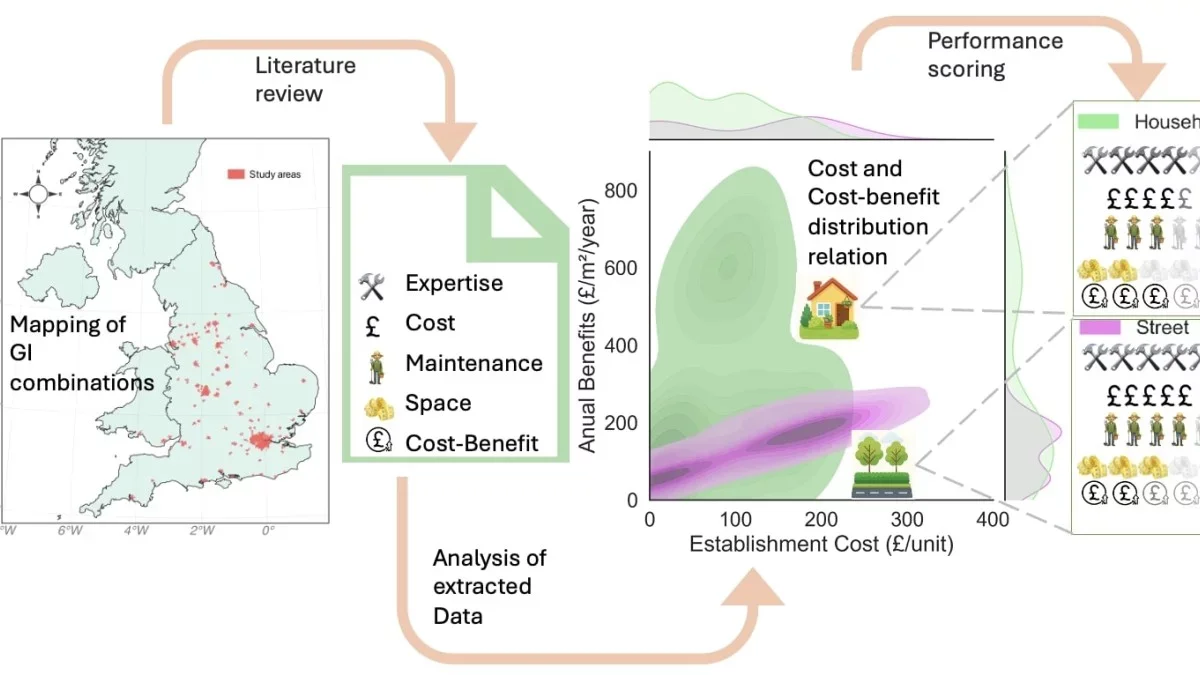Simple checklist helps you choose the best way to green your space
A practical, evidence-based checklist developed by scientists at the University of Surrey is helping everyone from keen gardeners to local councils plan their next greening project with confidence.
Researchers from Surrey’s Global Centre for Clean Air Research (GCARE) in collaboration with their project partners, have developed a five-point scoring framework that rates 80 types of greening, from front gardens and shrubs to street trees and green walls. The framework helps users compare what each option costs, how much space it needs, the level of gardening expertise required, the upkeep involved, and the likely economic returns from their wide range of environmental benefits.
Published in Sustainable Horizons, the study is part of the UK Research and Innovation-funded GP4Streets project, which aims to create an online tool that will let residents and local authorities explore greening options and download DIY guidance for their chosen setup.
The researchers analysed 80 types of green infrastructure across 112 towns and cities in England and Wales. Using Google Street View and aerial images, they recorded how different types of greenery – from simple lawns to mixed plantings of trees, hedges and potted plants – are used around homes and along streets.
Each greening setup was scored across five practical measures: cost (how much it takes to get started), maintenance (money needed to keep it going), expertise (the gardening skill level required), space (how much room is needed), and cost-benefit (the overall return for effort and investment).
The study found that while local councils tend to focus on larger schemes such as tree planting and grass verges, household greening offers a wider variety and greater potential. Mixed gardens – such as a small front garden with a tree, a few shrubs and a green wall – gave the greatest economic benefits for their size.
The researchers also found that simple gardens with lawns or hedges require little time or money to maintain, while more layered setups – such as trees or green walls – need more care and cost more over time. Smaller options, like container gardens or hanging plants, can thrive in limited space and still contribute meaningfully to cleaner air and cooler streets.
The study builds on GCARE’s work on urban greening, including projects such as RECLAIM Network Plus and GREENIN Micro Network Plus. The GP4Streets (DIY Greening Prescription for Climate Adaptation in Urban Streets) project is supported by UK Research and Innovation under the Maximising UK Adaptation to Climate Change initiative (Grant No. UKRI1281) and delivered in partnership with the Universities of Bath, Sheffield, University of the West of England Bristol, and Imperial College London.
Reference:
Biswal, A., Sun, H., Bray, I., Cranshaw, O., Kjeldsen, T.R., Pain, C.C., Roberts, T., Sinnett, D., Wild, T., Wenk, J., Kumar, P. (2026). Household driven and council managed street greening: scoring cost, expertise, space, and cost-benefits of green infrastructure combinations. Sustainable Horizons, 17, 100165.
https://doi.org/10.1016/j.horiz.2025.100165
Read the full press release here: Simple checklist helps you choose the best way to green your space | University of Surrey




